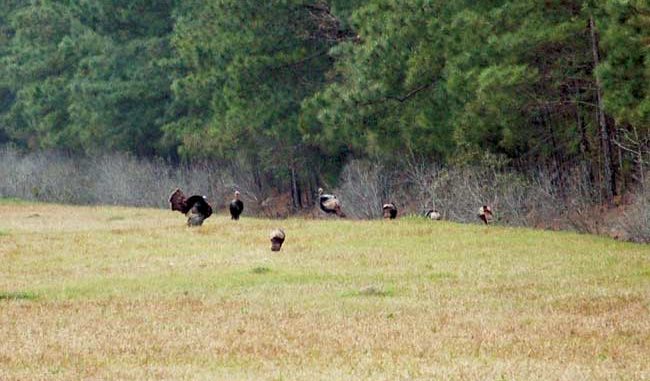
Imagine peering down from above, from a treestand attached to a white oak filled with acorns, as gray squirrels begin to scurry through the branches, breaking the early morning silence.
Looking down, a sea of lush, green vegetation glows in the early-morning haze, with sounds of whistling wings from ducks making their way to the flooded grainfields just across the treeline.
As the sun continues to illuminate the field, the tranquil scene is disrupted as two 8-point bucks bust into the field, following the path left by a doe in estrus. As the two bucks cross a drainage ditch that bisects the field, a covey of quail and a family of cottontail rabbits flush from the brushy margins of the ditch, fleeing out of sight inside the sanctuary of the woodline.
Paradise at last!
The South is full of opportunities for healthy wildlife populations, with the chance for a record-book buck or wild turkey, a mixed bag of migrating ducks and the chance to take a modest limit of quail, rabbit, squirrel or wild hog.
Any wildlife manager on any piece of land from 25 to 25,000 acres can improve the health of the wildlife that reside there, and also attract new species to the property through habitat management, habitat manipulation and farming.
For the foreseeable future, this column will delve into a variety of tactics and techniques to enhance the wildlife habitat on your property, including seasonal plantings, habitat management, pesticide/herbicide use, fertilization, soil preparation, artificial nesting structures, habitat manipulation through forest management and other “farming for wildlife” techniques.
People can assist wildlife by creating habitat that better meets certain species’ needs.
Whether fish are considered wildlife or not, they are just as much fun to manage and catch. Pond-management techniques, including harvest prescriptions and habitat manipulation, will appear regularly as well.
Wildlife populations can easily be manipulated on a tract of land through wildlife management. So what is “wildlife management” anyway? The definition is basically: “The application of scientific knowledge and technical skills to protect, conserve, limit, enhance or create wildlife habitat and to regulate harvest.”
All aspects of this definition are important, but more times than not, regulating harvests gets most of the attention under the premise that managing the animal and its harvest will improve the herd. While harvest restrictions are the easiest to control, the “scientific knowledge and technical skills to protect, conserve, limit, enhance or create wildlife habitat” takes considerably more effort, but will improve the overall health and diversity of the population of critters on the land.
To start managing for wildlife, start by developing a list of objectives with targeted species. All species of wildlife need adequate habitat, including food, space and shelter. As the wildlife manager alters and creates adequate habitat, the populations develop, strengthen and prosper. While some tracts of land have their stumbling blocks, there is always something to do that will improve habitat and the productivity of the land for growing or attracting wildlife. All species have their habitat preferences, too, but some techniques have a broader effect, allowing for benefits for several species at once.
Wildlife and habitat management is a year-round endeavor. Each month requires various tasks to be executed to reach the overall objectives. While some months are critical for certain tasks, other techniques are feasible during any month of the year.
Jeff Burleson is a native Carolinian who resides in Conway. He earned a B.S. in Fisheries and Wildlife Sciences from N.C. State in 1996. He is a practicing biologist and professional forester for The Brigman Company, a natural resources consulting firm based in Conway.




Be the first to comment